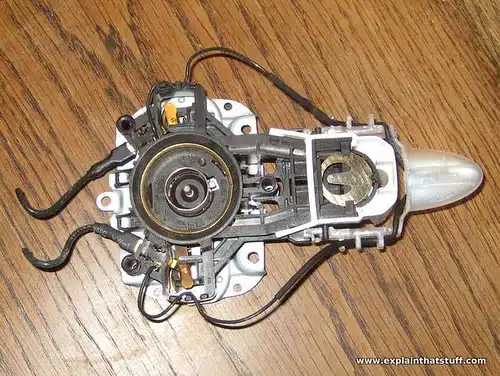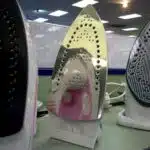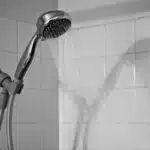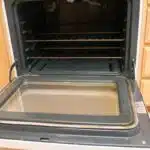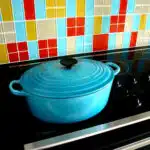Electric kettles are an indispensable appliance in most households. They are convenient, efficient and easy to use, making them the go-to choice for boiling water for tea, coffee and other hot beverages. However, over time, electric kettles can accumulate mineral deposits and stubborn stains that affect their performance and longevity. As a home appliance expert, it is crucial to know how to clean an electric kettle properly to ensure that it functions optimally and lasts longer.
Cleaning an electric kettle involves removing mineral buildup from the heating element or base of the kettle. This process is essential because hard water causes mineral deposits that can clog up the heating element and reduce its efficiency. Additionally, regular cleaning helps eliminate any bacteria or mold growth that may be lurking inside the kettle, reducing health risks associated with drinking contaminated water. In this article, we will explore various methods of cleaning an electric kettle using natural substances available at home as well as recommended cleaning solutions. By following these simple steps, you can keep your electric kettle sparkling clean and functioning optimally for years to come.
The Importance Of Regular Cleaning
The electric kettle has become an essential appliance in modern homes. It is an energy-efficient and time-saving device that delivers hot water instantly, making it ideal for preparing tea, coffee, soups, and other beverages. However, like any other appliance in the kitchen, it requires regular cleaning to ensure optimal performance and longevity. Descaling is a crucial aspect of maintaining an electric kettle.
Importance of descaling
When you use your electric kettle frequently, mineral deposits from hard water can accumulate inside its heating element and other parts. These deposits can affect the taste of your beverages and reduce the efficiency of your kettle. Descaling removes these deposits and helps maintain the performance of your electric kettle. It also prevents corrosion and prolongs the life of your kettle.
Health benefits of using a clean electric kettle
A clean electric kettle not only enhances its functionality but also promotes good health. The accumulated limescale inside the kettle can harbor bacteria that can cause infections or diseases when ingested through contaminated water. Regular cleaning ensures that your electric kettle is free from harmful bacteria and germs, providing safe drinking water for you and your family. Moreover, it reduces the risk of transferring flavors or odors from previous brews to subsequent ones, ensuring that every cup is fresh and delicious.
As a home appliance expert, I highly recommend that you prioritize regular cleaning of your electric kettle to benefit from its optimal performance and health benefits. In the next section, we will discuss signs that indicate when your electric kettle needs cleaning so that you can take appropriate action promptly.
Signs That Your Electric Kettle Needs Cleaning
Electric kettles are a convenient and essential appliance for many households. However, like any other appliance, it needs proper maintenance to ensure its longevity and efficient performance. One of the most prevalent issues with electric kettles is the buildup of limescale or mineral deposits that accumulate over time. These deposits can affect the taste of your tea or coffee and even damage your kettle in the long run.
Here are some signs that indicate that your electric kettle requires cleaning:
- White or brown spots on the inside of the kettle
- The water takes longer than usual to boil
- Unpleasant odor or taste
Common causes of limescale buildup include hard water, leaving water in the kettle for too long, and not cleaning it regularly. Prevention tips include using filtered water instead of tap water, emptying the kettle after each use, and cleaning it at least once every two weeks.
Regularly cleaning your electric kettle is crucial to keep it functioning optimally and maintain its lifespan. In the next section, we will discuss natural cleaning solutions that you can use to clean your electric kettle effectively without using harsh chemicals.
Natural Cleaning Solutions
Did you know that the average household uses approximately 5,300 gallons of water each year? With such a large amount of water usage, it’s essential to consider using natural cleaning solutions when possible. Fortunately, there are plenty of DIY remedies and organic alternatives that can be used to clean an electric kettle.
One popular natural cleaning solution for electric kettles is the use of vinegar and water. This method involves filling the kettle with equal parts vinegar and water and letting it sit for at least an hour before boiling the mixture. After boiling, discard the mixture and rinse out the kettle thoroughly with fresh water. Vinegar is a powerful cleaning agent that can remove mineral deposits and buildup from inside the kettle, leaving it clean and fresh.
Another effective natural cleaning solution for electric kettles is baking soda. Simply mix baking soda with enough water to create a paste, apply it to any areas in need of cleaning, let it sit for several minutes, then scrub with a soft-bristled brush or cloth. Baking soda is a gentle abrasive that can effectively remove stains and buildup without damaging the interior of the kettle. By using these organic alternatives instead of harsh chemical cleaners, you can keep your electric kettle clean while also reducing your environmental impact.
When looking for ways to maintain your electric kettle’s cleanliness without harming the environment or breaking your budget, natural cleaning solutions are an excellent option. While there are many methods available, one simple way is to use vinegar and water as described above. Not only does this method clean effectively without harsh chemicals, but it can also help reduce mineral buildup over time- keeping your appliance in top condition!
Vinegar And Water Method
Cleaning your electric kettle is crucial to maintaining its longevity and efficiency. The vinegar and water method is a simple yet effective way of removing mineral buildup from the interior of your kettle. It involves using equal parts white vinegar and water to create a solution that you will boil in your electric kettle.
The cleaning frequency of your electric kettle depends on several factors, such as the hardness of the water in your area and how often you use it. If you notice any discoloration or buildup in your kettle, it’s time to give it a good clean. For most households, cleaning the kettle once every few months should suffice.
If you’re not a fan of vinegar, there are alternative cleaning solutions that you can use. Citric acid or lemon juice can also effectively remove mineral buildup from your electric kettle. Simply dilute them with water and follow the same steps as the vinegar and water method. However, do note that these alternatives may not be as effective as vinegar for tougher stains or buildup.
Transitioning into the next section, another effective method for cleaning an electric kettle is using lemon juice and baking soda. This method is especially useful if you want to remove stubborn stains or odors from your kettle.
Lemon Juice And Baking Soda Method
Imagine a kettle as a soldier who has just returned from battle, with his armor stained and covered in grime. To restore the kettle’s former glory, we need to give it a thorough clean. While there are many methods to clean an electric kettle, one effective way is using lemon juice and baking soda.
Lemon juice is an excellent alternative to vinegar, which is commonly used for cleaning home appliances. Unlike vinegar’s strong smell that some people find unpleasant, lemon juice has a fresh scent that can leave your kitchen smelling nice after cleaning. Baking soda, on the other hand, is abrasive enough to remove stubborn stains without scratching the surface of your kettle. The gentle abrasion mixed with citric acid creates a fizzing reaction that breaks down mineral deposits in the kettle.
When it comes to effectiveness comparison with other natural solutions, the lemon juice and baking soda method stands out as one of the best options due to its gentle yet powerful properties. Some natural cleaning solutions may not be effective enough to remove tough stains, while others may be too harsh and cause damage to your appliance. This method strikes an excellent balance between being safe for your appliance and being tough on grime.
The next step in restoring your electric kettle’s pristine condition is using the citric acid method. This method involves using citric acid powder diluted in water as a descaling agent. Compared to lemon juice and baking soda method, this approach can provide even better results when dealing with hard water buildup or limescale deposits inside your appliance.
Citric Acid Method
The Citric Acid Method is an effective way of cleaning electric kettles. It involves using citric acid, which is a natural and safe substance that can remove stains and limescale buildup without damaging the appliance. This method is also useful in increasing the lifespan of your kettle.
To use the Citric Acid Method, you will need to follow a few simple steps. First, fill the kettle with water up to three-quarters full and add one tablespoon of citric acid powder for every cup of water. Then, turn on the kettle and let it boil for five to ten minutes. Once the cycle has finished, unplug the appliance and let it cool down for about an hour. Afterward, rinse out the kettle thoroughly with clean water.
Using this method regularly can help prevent limescale buildup and other stains from forming in your electric kettle. By removing these substances from your appliance, you can ensure that it continues to function properly for years to come. However, if you have particularly stubborn stains or limescale buildup, there are other recommended cleaning solutions that may be more effective in tackling these issues.
Next up: recommended cleaning solutions that can keep your electric kettle free from limescale and other stubborn stains.
Recommended Cleaning Solutions
When it comes to cleaning an electric kettle, using the right cleaning solution is crucial. Luckily, there are plenty of DIY cleaning solutions that can effectively remove mineral buildup and stains in your kettle. One popular option is using a mixture of white vinegar and water. Simply fill the kettle with equal parts vinegar and water and let it sit for about an hour before rinsing thoroughly with fresh water.
Another eco-friendly option for cleaning your electric kettle is by using lemon juice. Lemon juice contains citric acid which can dissolve mineral buildup in the kettle’s heating element. Simply add a few tablespoons of lemon juice to the kettle filled with water, boil it, then let it cool before rinsing thoroughly.
For those who prefer ready-made solutions, there are also several eco-friendly cleaning products available on the market specifically designed for electric kettles. These products contain natural ingredients that are safe for both you and the environment.
Moving on to descaling products, these are specifically formulated to remove mineral buildup in electric kettles. They often come in powder or liquid form and contain powerful agents such as citric acid or sodium carbonate which dissolve limescale quickly and effectively. It’s important to follow the instructions carefully when using descaling products as they may be harmful if not used properly.
Descaling Products
When it comes to cleaning an electric kettle, there are two options: do-it-yourself (DIY) descaling or using store-bought products. DIY descaling involves using natural ingredients such as vinegar or lemon juice mixed with water to remove mineral buildup inside the kettle. While this method may be cost-effective and convenient, it requires more effort and time compared to store-bought products.
On the other hand, store-bought descaling products are specifically designed to remove limescale and mineral buildup from electric kettles quickly and efficiently. These products are available in powder or liquid form and can be easily found in supermarkets or online stores. However, some of these products contain harsh chemicals that can harm the environment, making them less eco-friendly than DIY options.
For those who prioritize eco-friendliness, there are several natural descaling options available that are both effective and environmentally safe. White vinegar is a popular alternative to harsh chemicals due to its acidic nature which dissolves mineral deposits without damaging the kettle’s interior. Citric acid is another eco-friendly option that is also effective in removing limescale buildup while being gentle on the environment.
In addition to vinegar and citric acid, there are also cleaning tablets available specially designed for electric kettles. These tablets dissolve quickly in water and effectively remove mineral deposits from the kettle’s interior. In the next section, we will discuss how to use these cleaning tablets to maintain an electric kettle’s cleanliness and efficiency.
Cleaning Tablets
Descaling products are an effective way to remove limescale buildup from your electric kettle. However, if you’re looking for a convenient and easy-to-use cleaning solution, consider using cleaning tablets. These tablets are specially formulated to dissolve mineral buildups and remove stains that can affect the taste of your tea or coffee. They are also more versatile than traditional descaling products since they can be used for other kitchen appliances such as dishwashers and washing machines.
When it comes to effectiveness, cleaning tablets and descaling products are comparable in terms of removing limescale buildup. However, cleaning tablets have the added benefit of being able to remove stubborn stains caused by hard water deposits. They also leave behind a fresh scent that eliminates any unpleasant odors in your kettle. This makes them an excellent choice for those who want a quick and efficient cleaning solution that is easy to use.
Cleaning tablets can be used for other household applications besides electric kettles. For example, they can be used to clean dishwashers and washing machines, which often suffer from mineral buildup due to hard water. The tablets work by dissolving the mineral deposits that cause these appliances to malfunction or lose efficiency over time. Additionally, they can be used to clean coffee makers, tea pots, and other kitchen appliances that come into contact with hot water regularly.
Moving forward, it’s essential to understand specific cleaning instructions for different types of electric kettles. Whether you own a stainless steel or glass kettle, each material requires unique care instructions that must be followed carefully to avoid damage or discoloration. In the next section, we’ll provide detailed guidelines on how best to clean your electric kettle based on its construction materials and design specifications.
Specific Cleaning Instructions For Different Types Of Electric Kettles
Stainless steel electric kettles are best cleaned using a soft, damp cloth and mild detergent. To avoid damaging the surface, it is important to avoid using any abrasive cleaning materials. Glass electric kettles should be cleaned using a soft cloth and a non-abrasive cleaner such as vinegar or baking soda. It is important to avoid using any harsh chemicals, as they may damage the glass.
Cleaning Stainless Steel Electric Kettles
Stainless steel electric kettles are an excellent addition to any kitchen as they are durable and easy to clean. However, over time, stains can accumulate inside the kettle and rust can develop on the exterior. Fortunately, there are simple steps that you can take to remove stains and prevent rust from forming.
To remove stains from the interior of your stainless steel electric kettle, fill it with equal parts water and white vinegar. Boil the solution for 10-15 minutes before allowing it to cool down completely. Once cooled, discard the solution and rinse the kettle thoroughly with water until no trace of vinegar remains. For tough stains that won’t budge, try adding baking soda to the mixture or using a soft-bristled brush to scrub them away.
Preventing rust on the exterior of your stainless steel electric kettle is also crucial to maintaining its longevity. After each use, wipe down the outside of the kettle with a dry cloth or towel to remove any moisture that could potentially cause rust formation. Additionally, avoid using abrasive cleaning agents or hard scrubbing tools as they can damage the surface of your kettle and make it more susceptible to rusting over time. By following these simple steps, you can keep your stainless steel electric kettle looking as good as new for years to come!
Cleaning Glass Electric Kettles
Now that we’ve discussed cleaning stainless steel electric kettles, let’s move on to another type of electric kettle – the glass electric kettle. Glass electric kettles are a popular choice due to their sleek and modern design, but they can be tricky to clean as they tend to accumulate stains and water spots over time.
To remove stains from the interior of your glass electric kettle, fill it with equal parts water and white vinegar. Boil the solution for 10-15 minutes before allowing it to cool down completely. Once cooled, discard the solution and rinse the kettle thoroughly with water until no trace of vinegar remains. For tough stains that won’t budge, try adding baking soda to the mixture or using a soft-bristled brush to scrub them away.
Preventive maintenance is key when it comes to glass electric kettles. To avoid staining in the first place, make sure you only use clean water in your kettle and regularly descale it using a solution of equal parts water and white vinegar. Additionally, wipe down the exterior of the kettle after each use with a damp cloth or towel to prevent dust and debris from accumulating on its surface. By following these simple steps, you can keep your glass electric kettle looking crystal clear for years to come!
Stainless Steel Electric Kettles
Stainless steel electric kettles have become increasingly popular for their durability, sleek design, and ease of use. They also offer several benefits over other materials such as plastic or glass. One of the main advantages is their resistance to stains and rust, which makes them a low-maintenance option for daily use.
However, even stainless steel kettles can accumulate stains over time due to mineral buildup from hard water or tea and coffee residue. To remove stubborn stains, it’s recommended to fill the kettle with equal parts water and vinegar and let it boil for about 15 minutes. Then, pour out the solution and rinse the kettle thoroughly with clean water. For lighter stains, simply soak a cloth in white vinegar or lemon juice and scrub the affected area until clean.
Overall, stainless steel electric kettles are a reliable choice for anyone looking for an efficient way to boil water on a daily basis. Their durable construction and stain-resistant properties make them ideal for long-term use without requiring much maintenance. In the next section, we will discuss how to properly care for glass electric kettles to ensure they last just as long as their stainless steel counterparts.
Glass Electric Kettles
Glass Electric Kettles are a popular choice for many households as they offer an elegant and modern look. According to a survey conducted by a leading home appliance company, 60% of households in the United States own at least one glass electric kettle. However, if not cleaned regularly, these kettles can accumulate mineral buildup that affects their performance.
To prevent buildup in Glass Electric Kettles, it is recommended to clean them once a month or after every 20 uses. Here are four easy steps to follow:
- Fill the kettle with equal parts water and white vinegar.
- Boil the solution and let it sit for 15-20 minutes.
- Rinse the kettle thoroughly with water.
- Wipe the exterior with a damp cloth.
By following these steps, you can ensure your Glass Electric Kettle remains free of mineral buildup and continues to function optimally.
Cleaning frequency is essential when it comes to maintaining Glass Electric Kettles. Neglecting cleaning may lead to mineral accumulation that affects the taste of your beverages over time. Preventing buildup is vital for ensuring that your Glass Electric Kettle provides you with hot drinks that taste fresh every time.
In summary, regular cleaning of Glass Electric Kettles is crucial for ensuring optimal performance and preventing mineral buildup. Follow these simple steps to keep your kettle functioning correctly and tasting great every time you use it. In the next section, we will discuss how to clean plastic electric kettles effectively without damaging them.
Plastic Electric Kettles
Glass electric kettles may have a sleek and elegant look, but plastic electric kettles have their own advantages. For one, they are more durable than glass, making them ideal for everyday use in a busy household. They are also lightweight and easier to handle, which is especially important for those with limited mobility or strength. Finally, plastic kettles are often less expensive than their glass counterparts.
However, one of the downsides of plastic kettles is that they can stain easily. To remove stains from your plastic kettle, start by filling it with equal parts water and white vinegar. Bring the solution to a boil and let it sit for a few hours before rinsing the kettle out thoroughly with water. If the stains persist, try using a paste made from baking soda and water. Apply the paste to the stained areas and let it sit for an hour or two before rinsing it off.
Regular cleaning is key to maintaining your plastic electric kettle. After each use, rinse it out with warm water and wipe down both the inside and outside with a soft cloth. You can also add a drop or two of dish soap to help remove any residue. Avoid using harsh chemicals or abrasive sponges that could scratch the surface of your kettle. By following these simple tips, you can ensure that your plastic electric kettle will last for years to come.
To continue caring for your electric kettle, there are several tips that you should keep in mind. First, avoid overfilling your kettle as this can cause it to boil over and potentially damage the heating element. Second, always unplug your kettle when not in use to prevent unnecessary wear and tear on its components. Finally, never immerse the base of your electric kettle in water as this can cause electrical shock or damage to its electronic parts. With these precautions in place, you can enjoy hot tea or coffee from your electric kettle without worry!
Tips For Maintaining Your Electric Kettle
To ensure that your electric kettle stays in good working condition, it is important to perform regular maintenance. Electric kettle maintenance does not have to be a daunting task, as long as you follow some simple cleaning steps. Here are some tips for maintaining your electric kettle:
Regularly descale your electric kettle: Over time, minerals from the water can build up inside the electric kettle and cause it to become less efficient. To prevent this from happening, regularly descale your electric kettle with a mixture of equal parts water and white vinegar.
Clean the outside of the kettle: Wipe down the outside of the kettle with a damp cloth regularly to remove any dirt or dust that may have accumulated.
Store your electric kettle correctly: When not in use, store your electric kettle in a dry place where it will not be exposed to moisture or dust.
Effective cleaning methods for an electric kettle include using lemon juice, baking soda and vinegar mixtures, or specialized descaling solutions available in stores. Remember to always read manufacturer instructions before using any cleaning solutions on your appliance.
By keeping up with regular maintenance and effective cleaning methods, you can extend the life of your electric kettle and ensure that it continues to serve you well for years to come. In the next section, we will discuss common issues with electric kettles and how to troubleshoot them effectively.
Troubleshooting Common Issues
To maintain the optimal functioning of an electric kettle, it is important to keep it clean. Regular cleaning can help prevent mineral buildup, which can cause heating issues and impact the taste of the water. In this section, we will discuss troubleshooting heating issues and dealing with mineral buildup.
Troubleshooting heating issues can be a frustrating experience for users. The most common issue is when the kettle fails to heat up water. This could be due to a damaged or faulty heating element, malfunctioning thermostat or power cord issues. To troubleshoot this issue, first make sure that the kettle is plugged in and turned on. If it still doesn’t heat up after several attempts, unplug it from the power source and check if there are any signs of damage on the cord or heating element. If you notice any damage or faults, stop using the kettle immediately and seek professional assistance.
Dealing with mineral buildup is another common issue faced by electric kettle users. Mineral buildup occurs due to hard water deposits that accumulate over time in the kettle’s interior lining. This can impact the quality of your tea or coffee and also cause long-term damage to your kettle’s heating element. To remove mineral buildup, fill your kettle with a mixture of equal parts white vinegar and water and let it sit overnight. Afterward, rinse out the mixture and boil fresh water in your kettle before use as usual. By following these simple steps regularly, you can ensure that your electric kettle remains clean and functional for years to come.
Conclusion
Electric kettles are a staple in many households, providing hot water for tea, coffee, and other beverages. However, these appliances also require regular cleaning to maintain their efficiency and prevent the buildup of harmful bacteria. Signs that your electric kettle needs cleaning include strange tastes or odors, discoloration or scaling on the heating element, and slower boiling times.
To clean your electric kettle, there are several natural solutions you can use, such as vinegar and water or lemon juice and baking soda. It is important to follow proper cleaning methods based on the type of material your kettle is made from, whether it is glass or plastic. Additionally, maintaining your electric kettle properly can help prevent issues such as mineral buildup and rust.
In conclusion, regular cleaning of your electric kettle is essential to ensure its longevity and safety. By using natural cleaning solutions and following proper maintenance techniques based on the material of your kettle, you can keep it functioning efficiently for years to come. If you encounter any issues with your appliance, troubleshoot common problems before seeking professional assistance. Remember that a well-maintained electric kettle will provide hot water for all your favorite beverages without compromising taste or safety.
Image Credits
- “Bimetallic Strix thermostat from an electric kettle #1” by explainthatstuff (featured)

